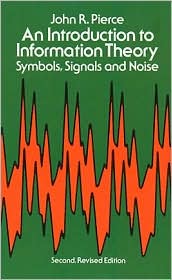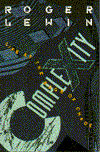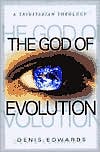Questioning Specification (I.D. XIX)
Dembski says that some biological systems — say, the flagellum which propels a bacterium — pass a "complexity-specifcation criterion" which vouchsafes their having arisen by design. They are too complex — too improbable — to have arisen by chance. But neither can we attribute them to the automatic outworking of natural law, since they might not have arisen at all. They are contingent, not necessary.
Yet not all contingent, satisfyingly complex systems vouchsafe design. Only the ones that are "specified" do.
A contingent, not-absolutely-necessary biological system is, in probability theory, an event. If sufficiently complex — a flagellum requires the yoking together of some 50 proteins — its probability of occurring by sheer chance is low. But, even so, not all sufficiently improbable events have "structure" — a "suitable pattern" — the way a flagellum does. Only if events have a suitable pattern can design be inferred.
If it exists, this "suitable pattern" is the "specification" of a contingent, sufficiently complex event. The pattern qua specifcation needs to be susceptible of being generated, independently of the event, by recourse to "side information."
The reason that this "information" is on the side and not part of the event itself is to guarantee that it is not a "fabrication": a pseudo-specification that has been derived from knowledge of the event — kind of like an archer shooting an arrow blindly at a wall and then painting a target around wherever it strikes.
No, the target, as a specification, has to be logically (not necessarily temporally) prior to the event. Only then can we "detach" the pattern — the target, the specification — from the event itself, on the basis of the side information from which the specification can be derived.
Some of my confusion stems from the fact that Dembski says (or seems to say?) that we can determine when such a logically prior specification — such a structure or pattern, based on side information — exists for a contingent, suitably complex event even when we don't know what the pattern or specification is, or which side information can yield it.
For one thing, I'm not sure I fully see what he means when he says probability theory can assure us that the (unidentified) side information which generates the (unknown) pattern is "conditionally independent" of the event. I understand that this is what certifies that the specification is not a fabrication, but I don't really get how it all works in the absence of knowledge of what the side information is.
For another thing, I really don't follow what Dembski says with respect to "tractability." The (unidentified) side information "must provide the resources necessary for constructing the pattern in question," Dembski says (p. 139).
Note well that, as I say, the pattern we'd like to identify, but can't — the one to which the event in turn conforms — is not itself identical with the side information. Rather, the side information, should we become privy to it, would allow us to construct the pattern which could then be (in a separate step) transformed into the event in question.
Dembski gives, for an example, an as-it-turns-out fabricated series of coin flips which look for all the world as if repeated tosses of a fair coin generated it. Then he shows that the heads and tails in the supposed series of fair-coin tosses could be turned into a string of 1's and 0's. This putatively random sequence of bits constitutes the "pattern" for the event itself, which is, we must remember, the string of H's-for-heads and T's-for-tails.
In this simple example, the derivation of the pattern from the event itself is quite straightforward, since H's and T's practically cry out to be transformed into 1's and 0's.
When suitably chopped into apt subsequences, Dembski then shows, this seemingly random pattern of 1's and 0's would actually represent an easy-to-generate ordered list of binary numbers. This ordered list would simply recapitulate the pattern associated with the event. Our knowledge of binary arithmetic, embodied in an algorithm which generates the ordered list, would thus be the side information behind the pattern.
In this example, we easily derive the pattern from the event, then we twig to the way to restate the pattern based on the side information (i.e., our knowledge of binary arithmetic). Once we have done both of those things, it's easy to show "conditional independence": that knowledge of the side information doesn't affect the probabilities we independently assign to the event consisting of the putatively random coin tosses.
In other words, though there is side information and though from it can be derived a pattern to which the event corresponds, the same event could still have occurred as the result of tossing a fair coin the requisite number of times. The (very low) probability of that happening by blind luck is nevertheless not affected by our having twigged to the side information.
Also in this example Dembski implies that, once we identify the side information and how it generates the pattern, we can easily prove "tractability": that the algorithm which embodies the side information could indeed generate the pattern we have identified, which is the list of 1's and 0's which we transformed the original H's and T's into.
What boggles my mind about all this is Dembski's claim (if I read him aright) that we can prove "conditional independence" and "tractability" even when we have not twigged to the event's pattern's side information: in this example, our knowledge of binary arithmetic.
Now, I presume the sticking point in many real-world cases would be how to derive the pattern (the 1's and 0's) from the event when the nature of the event itself does not suggest how the pattern could be derived. How do you figure out the 1's and 0's of a bacterial flagellum?
Or, even if a 1's-and-0's pattern can be established as binary inforamtion, how do we always know what side information can serve to "detach" the pattern from the event and thereby show that the pattern is actually a specification?
What exactly is the sequence of steps Dembski proposes in determining that a specification, a detachable undlerlying pattern, exists for an event? I feel that Dembski simply does not go into enough explanatory detail at this crucial point in his argument to allow me to quench my uncertainty.
I assume that some or all of these questions may be answered in Dembski's more technical book, The Design Inference. I intend to get my hands on that book and report back.
***
Having written the above and looked it over, I have to admit a couple of things.One is that when I began writing it, I didn't understand what I came to understand during the process of doing the writing: that, crucially, the pattern of an event is different from the side information which "detaches" that pattern from the event itself (thereby making the pattern a "specification" for the event).
The other thing I have to admit is that, in the light of that first realization, I may have been wrong to believe that Dembski believes that we can establish "detachability" if we can't identify the event's underlying pattern, or else if we can't pinpoint the side information which can generate the pattern independently of the event in question.
Wht Dembski actually seems to be talking about on pp. 138-139 is using probability theory and information theory to prove, respectively, conditional independence and tractability when these criteria are not obviously satisfied — but when the event's pattern and the side information which can putatively generate it are indeed in hand.
Which leads me to continue to wonder: when it comes to natural biological systems like a bacterial flagellum, how do we figure out what pattern of 1's and 0's it corresponds to? And, then, how do we figure out what side information successfully detaches that pattern from the actual "event," the flagellum itself?


















0 Comments:
Post a Comment
<< Home